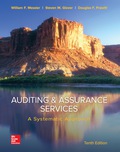
Introduction:
Upper Deviation Rate is the sum of all the samples taken by the auditor and addition of allowance for sampling risk. If the upper deviation limit is less than or equal to the tolerable rate, the sample results support reliance on the control procedures tested.
Allowance for Sampling Risk can be defined as uncertainties associated with sampling. It is the difference between tolerable deviation and mean of population.
Tolerable Deviation Rate is the maximum deviation that an auditor is willing to accept so as to rely upon a specific control. It is inversely proportional to the
If control risk is increasing, it clearly brings out that actual population deviation rate (actual deviation) is higher than deviation computed by auditor that is the upper deviation set by him.
Substantive Testing shows that although actual population rate exceeds upper deviation rate but it doesn’t mean that it exceeds tolerable deviation rate and auditor cannot rely upon it totally.
To describe: Expected population deviation and tolerable deviation rate relationships.
Want to see the full answer?
Check out a sample textbook solution
Chapter 8 Solutions
EBK AUDITING & ASSURANCE SERVICES: A SY
- The excess of the present value of benefits over the present value of costs of a course of Action is called as: a.All of these b.Benefits c.Wealth d.Payoffarrow_forwardThe decisions relating to the use of profits or income of an entity or organization are known a.Any of these b.Dividend decisions c.Finance decisions d.Investment Decisionarrow_forwardWhat are the three interrelated areas of finance? (a) Financial markets, option and forwards (b) Banking, financial institutions and swap currency (c) Investment, Financial management and Financial market & Financial institution (d) All of abovearrow_forward
- The method that converts the amount of present cash into an amount of cash of equivalent value in future is: a.Budgeting b.Both a and b c.Discounting method d.Compounding methodarrow_forwardThe government finance which includes the principles and practices relating to the Procurement and management of funds for Central Government, and Local bodies is known as: a.Public Finance b.All of these c.Private Finance d.Business Financearrow_forwardwhat is financial ratios?arrow_forward
- Which of the following is the activity which finance people are involved? (a) Investing decisions (b) Marketing decisions (c) Promotion decisions (d) Non of Abovearrow_forwardYou plan to invest $3,500 per year for 39 years into an IRA. What will the value of the IRA be after 39 years if the interest rate is 9% per year? Your answer may vary due to rounding.arrow_forwardIn finance, we refer to the market where new securities are bought and sold for the first time? (a) Money market (b) Capital market (c) Primary market (d) Secondary marketarrow_forward
- 1: ________ is shown on a multiple-step but not on a single-step income statement. A. Credited to Inventory B. A customer utilizes a prompt payment incentive. C. Debited to the Inventory account D. Gross profitarrow_forwardwhat is corporate finance? explain it.arrow_forwardA lorenz curve graphs the _________________ received by everyone up to a certain quintile. A. Unequal distribution over time B. Normative shares of income C. Cumulative shares of income D. Total share of incomearrow_forward
 Auditing: A Risk Based-Approach (MindTap Course L...AccountingISBN:9781337619455Author:Karla M Johnstone, Audrey A. Gramling, Larry E. RittenbergPublisher:Cengage Learning
Auditing: A Risk Based-Approach (MindTap Course L...AccountingISBN:9781337619455Author:Karla M Johnstone, Audrey A. Gramling, Larry E. RittenbergPublisher:Cengage Learning Auditing: A Risk Based-Approach to Conducting a Q...AccountingISBN:9781305080577Author:Karla M Johnstone, Audrey A. Gramling, Larry E. RittenbergPublisher:South-Western College Pub
Auditing: A Risk Based-Approach to Conducting a Q...AccountingISBN:9781305080577Author:Karla M Johnstone, Audrey A. Gramling, Larry E. RittenbergPublisher:South-Western College Pub Essentials of Business Analytics (MindTap Course ...StatisticsISBN:9781305627734Author:Jeffrey D. Camm, James J. Cochran, Michael J. Fry, Jeffrey W. Ohlmann, David R. AndersonPublisher:Cengage Learning
Essentials of Business Analytics (MindTap Course ...StatisticsISBN:9781305627734Author:Jeffrey D. Camm, James J. Cochran, Michael J. Fry, Jeffrey W. Ohlmann, David R. AndersonPublisher:Cengage Learning


